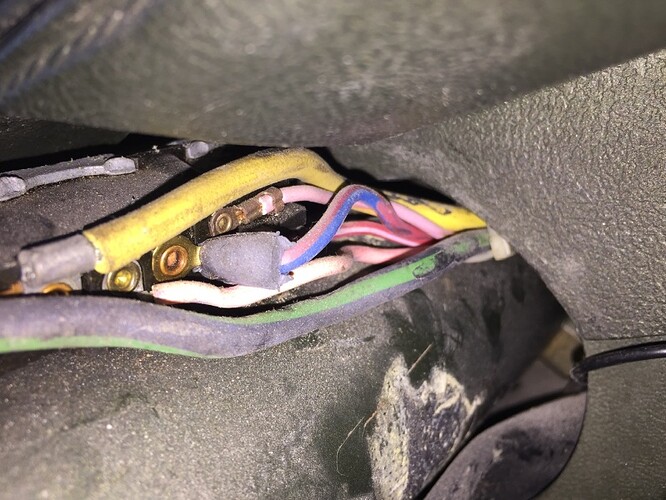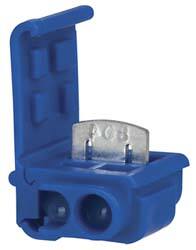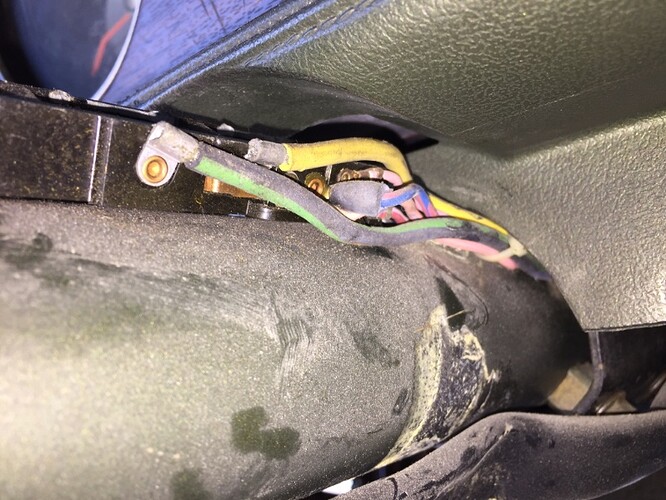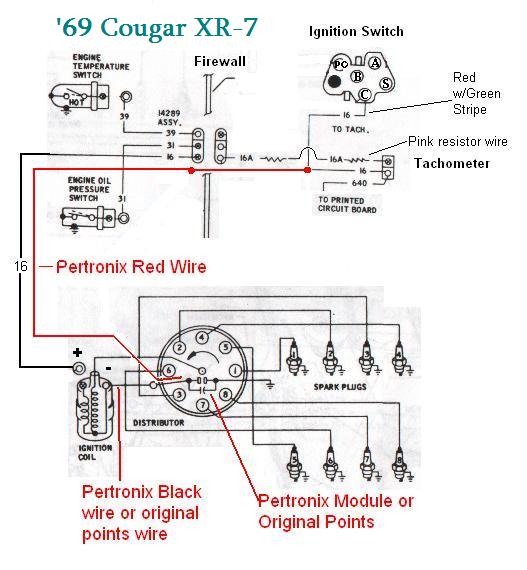All version of the Pertronix are 12 volt devices. When people say that it will work at low voltage, what they mean is it won’t fail right away. A few years ago I interviewed an engineer at Pertronix. They told me then they would appreciate any help they could get to clarify that you need to supply the Pertronix with 12 volts.
A long time a ago a very good electrical engineer and also Cougar guy wrote this:
From: Eric Overton
Date: Mon May 31, 2004 3:50 pm
Subject: RE: [COUGARS] Pertronix Wiring Result and a Question
The Pertronix was designed to run on 12V, and if anything it will last longer running that way than it will at 6V.
The reason is that the Pertronix isn’t what supplies the “+” terminal of the coil (which should always be at 6V
except when momentarily bypassed by the starter relay). The Pertronix is a switch that interrupts the connection
between coil “-” and ground. And like all switching devices, it wants to be either “on” or “off” and doesn’t like to
be hanging in some in-between state. The speed with which the switching action takes place is greater when the
device’s supply voltage is higher, so 12V is vastly preferable to 6V. Mind you, I’m talking very specifically about
the positive voltage supply to the Pertronix and not to the coil.
To get an idea what slow switching does to a switching device, go to any light switch in your house and very,
very slowly flip it on until the lamp just barely starts to flicker. And when it does, listen to the sound coming out
of the switch. If it sounds like something burning, that’s because it’s something burning. The transistor switch in
the Pertronix doesn’t have mechanical contacts, but in many respects, the effect is much the same. When it’s all
the way “off,” it’s resistance is infinite, so the power it’s being asked to dissipate is zero, since Power = Voltage /
Resistance^2. When it’s all the way on, the voltage across it is effectively zero, so again Voltage / Resistance is
also zero. But when you’re somewhere in the middle, voltage across the switch can be bigger than zero while
resistance is something less than infinity, and the result is that the power the switch is asked to dissipate is at its
maximum --shortening its life.
Bottom line: Powering the Pertronix at 12V will push the switch through the “half on” condition more quickly than
if it only has 6V behind it, so the period of time in which it has to dump power through itself instead of routing it
through the coil circuit is much reduced. And when the instructions say “connect this to 12V,” there’s usually a
reason.
The Pertronix is one of the best simple mods ever in my opinion. But there still seems to be a lot of mystery about making it work.
There are just a few very basic issues that need to be understood, and then I think everything else falls into place.
The back story: How this stuff works, or doesn’t.
The higher the voltage, the larger the gap a spark can jump. In the case of a set of points you don’t want a spark across the points gap when they are open. A spark is very, very, hot. Typically 4 to 5 THOUSAND degrees. The good news is that the area that gets that hot is also very very small. Never the less, as the points open and close the gap is narrow and a small amount of voltage can be enough to generate that little spark. The spark tends to burn away the contact points over time. This is why we call a bad set of points “burned”.
To reduce the amount of voltage being switched by the points, it was common engineering practice to use an inline resistor, sometimes called a ballast resistor, so that the points would only have to switch about 6 to 8 volts instead of the 14.4 that your alternator should be putting out. Cougars have what is called a resistance wire that serves this purpose. Typically it is the pink wire you find under the dash. Many times this wire is covered with an additional layer of cloth like insulation. The purpose of the cloth is to keep the resistor wire, which gets hot in operation, from heating up other things under the dash.
So for a set of points, running a lower voltage works well when the engine is running. But there is a problem during engine cranking when you are trying to start the engine. The battery, when fully charged is at 12.6 volts, already down about 2 volts from what the alternator produces when the engine is running. And then the starter motor is very nearly a dead short, so when the battery is trying to supply the current the starter needs, the voltage drops even more, sometimes to less than 9 volts. So we really don’t want to drop this voltage even more by running it through the resistor wire.
The engineers figured out a nice by pass to get more voltage to the points during cranking. There are two terminals on the side of the starter solenoid. The one on the same side as the starter cable connection is only electrically hot during engine cranking. The wire going from this terminal goes to the points and bypasses the resistor wire. I mention this here because it can give us a huge clue to a trouble shooting a common problem: the engine kicks over during cranking and then dies when you release the key. What this is telling us is that the voltage from the bypass circuit is adequate to run the car, but the voltage from the resistor wire is not.
Now you know why the original points / coil ignition is being supplied with a lower voltage: to eliminate sparks at the points. But that voltage being switched on and off by the points, is also feeding the coil. The purpose of the coil is to step up the voltage so it can jump the relatively huge gap at the spark plugs. As it turns out this is not that big of a problem because the voltage output of a coil can be increased by changing the number of turns (this is why they call it a coil remember?) of wire inside the coil. In general to increase the output of a coil you decrease the number of turns being fed by the battery, and increase the number of turns feeding the spark plugs. So for any coil design , there is a ratio of output voltage to input voltage.
Things would be simple if voltage was our only concern. Electrical power has two parts voltage, and current. Electrical power is measured in watts, and you can figure out how many watts of work you can do by multiplying voltage times current. Less of one is okay as long as you have more of the other. IF we need a certain amount of power to do the work we want, like to get a big fat spark to jump a spark plug gap, and we have limited amount of voltage, then we are going to need more current. More current also means we need bigger wire with less resistance so we don’t end up heating up the wire instead of doing the work. This is important to know because when the engineers design a circuit, the design it around a given maximum amount of current that everything needs to handle. Try to run too much current through the circuit and you will blow the fuse, or burn something up. There are no fuses in the ignition circuit so burning stuff up is your only option.
The Pertronix Ignitor is really like a little switch that is being turned on and off by a magnetic pulse (that little black ring thing that you put on the distributor shaft has magnets in it). The magnetic pulse has to be amplified in order to make the pulse strong enough to trigger the switch on and off. That amplifier and the switch itself (actually a type of transistor called a MOSFET) are both designed to operate using 12 volts. So they need their own power source to operate. The red wire on the Pertronix, needs to go to 12 volts not the 6 or so you get from the coil feed wire. Now this wire needs to be hot not only when the key is in the on position, but also during cranking. You also don’t want it to be hot when the key is in the accessory position. There are just not many places to get power that meet these criteria, but the ideal one is the wire (Red with Green stripe) that comes out of the switch that goes to the tach on an XR-7 or the Pink wire on a standard.
Now here is my trick for doing a clean install: Get a small piece of brass tube with a large enough diameter to pass the new power wire through the center. The tube only needs to be a few inches long. Sharpen one end. I just spin it against a grinding wheel. Stick a small pick or Phillips screw driver through the center of the tube. Now poke the pick / screw driver through the rubber grommet that carries the engine harness through the fire wall from inside the engine compartment. Be careful not to hit any other wires, and stay close enough to the center to make sure you go through the whole in the sheet metal. It will take a bit of force as the rubber is probably pretty hard after 45 years. Take your time, open a beer. Once you get it through, remove the pick, leaving the tube in place. Run a new wire ( use 18 gauge 105* C wire from Radio Shack) through the tube. Run a bunch through as it will make it easier to find on the inside. (The hardest part is finding the blessed wire under the dash.) Then once you have found it, connect it to the Red with Green stripe wire. Under the hood, pull the tube out of the rubber grommet, and slide it down and off the wire. You are almost there. You deserve a beer about now.
Under the hood you will connect the new wire you just installed to the red wire on the Pertronix, and only to the red wire. Leave the factory power feed wire (+) wire on the coil. Connect the black wire from the Pertronix to the negative post on the coil. The Pertronix is switching the ground on and off not the power. This part is optional, but when you connect the red wire from the Pertronix to the new wire you might want to use a male and female insulated bullet connector. (The female side is the hot side. That should be easy to remember) If you unplug this, your car won’t start. These cars are so easy to hot wire and steal that I really like having a very low tech way to defeat the average thief.
Okay so now you have eliminated the points. Have another beer. WOOHOO! On to the coil. OR maybe not. On our cars I would recommend you stay with the Flame Thrower 1 coil, leave the resistor wire in place, leave the plug gap where it is, and call it good.
The problem with adding a higher voltage coil is that it also means you are increasing the amount of work to be done. That means more current. More current means more heat. Some parts of the circuit are not designed to handle any more current. Like the tach in particular. And don’t think about getting rid of the Pink resistance wire. The tach will read too high until it burns up. The Flame Thrower 1 coil will work as it has 1.5 ohms of internal resistance. The Flame Thrower 2 has only .6 ohms internal resistance so you are potentially pulling 24 amps of current (14.4 /.6) through a bunch of 8 amp parts. Be sure you have good insurance.
Now if you are determined to run the biggest ignition you can find, fear not. You can run one of Rocketman’s three wire tachs, and then install a relay to switch a new much higher current circuit to deliver all of the current you might need. In hot rodding there is always a way!
Hope that helps.
One more thing. Will the Pertronix work hooked up straight to the coil? The answer is: sort of.
Most of the time it will work. During the most critical start up period it is getting the right voltage due to the by pass. When you are driving the car the alternator will probably hold the voltage high enough that it will probably run more or less okay. Where you notice the difference is at idle in particular if you have the heater, headlights or AC running. In severe cases the engine will die at idle and then restart perfectly. I have seen people bump up idle speeds to try to “fix” the problem not knowing what the real problem was. There are guys who have been driving cars wired like this for years that swear by it. I also know of people that have burned up three or four Pertronix units because they were wired this way that think the Pertronix product sucks. Wired to twelve volts I have never had a failure and at the moment I am running 8 of these on different cars.



